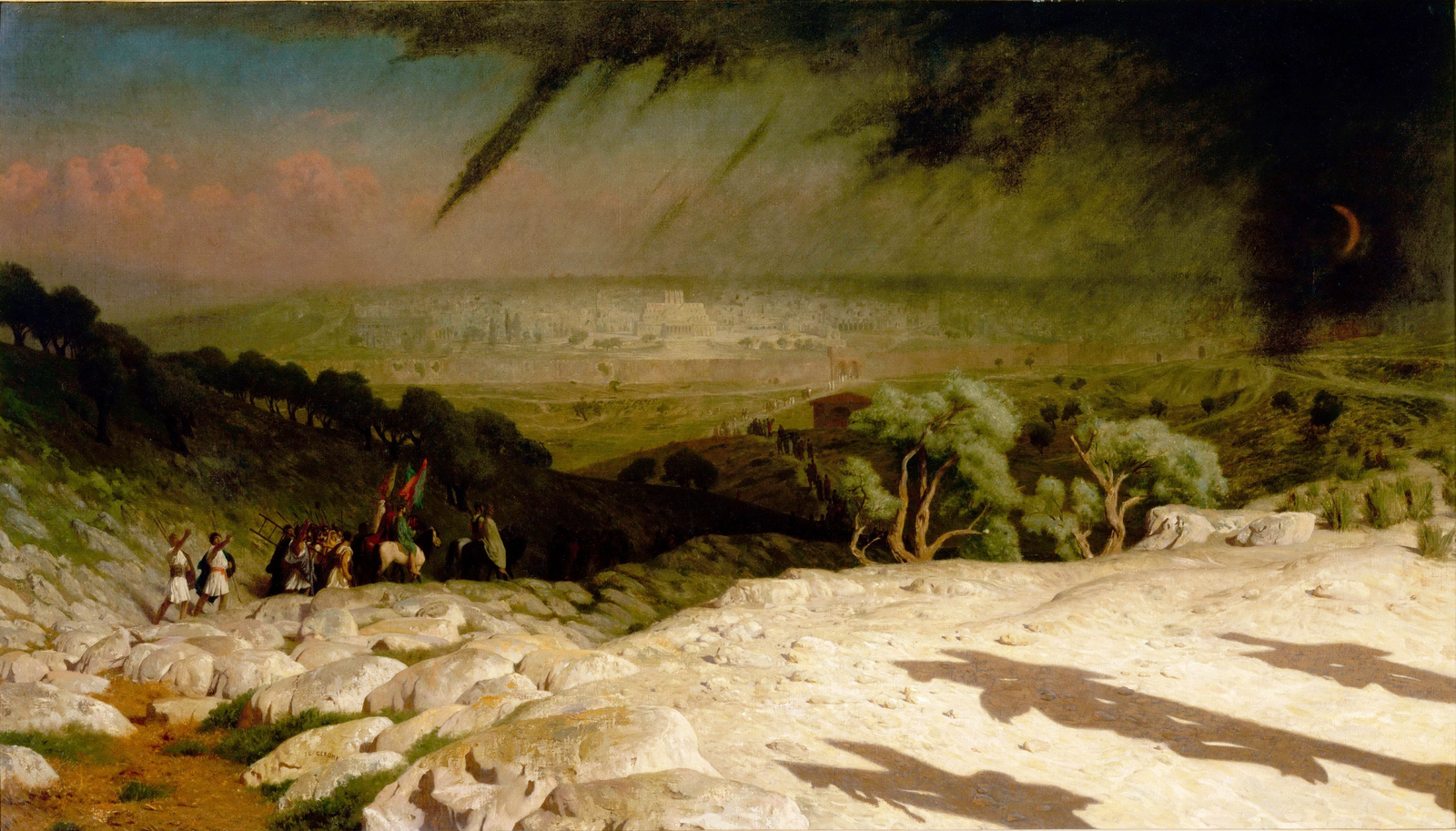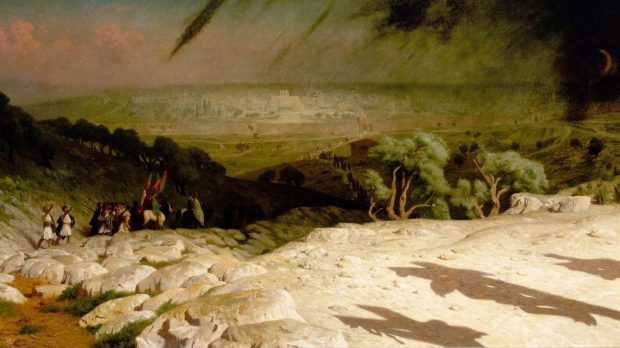Lenten Campaign 2025
This content is free of charge, as are all our articles.
Support us with a donation that is tax-deductible and enable us to continue to reach millions of readers.
The 40 days that Christ spent in the desert must have been almost as great a torment as the crucifixion itself. Finding images that combine these two aspects of Our Lord’s final weeks is almost impossible. Getting close to a sense of abandonment and isolation in the wilderness is this 1867 painting in the Musée d’Orsay, Paris. It’s one of my favorite evocations of the crucifixion, with shadows providing the only indication of the barbarism that has just taken place.

The artist, Jean-Léon Gérôme, knew the Holy Land well and decided to depict Christ’s death in a place that feels unnaturally wild and remote. Far in the distance is the city of Jerusalem. In the foreground is the stony ground of desolation. The weather matches the mood, with clouds of gloom as “darkness fell over the whole land until the ninth hour” (Luke 23:44-46). The sun is truly obscured, which makes the viewer wonder where the light is coming from to cast those strong shadows on the boulders. It is clearly celestial. Among the departing crowd are two individuals who turn to give a Roman salute towards the three silhouettes. Could they be early gentile converts? Perhaps one of them is Longinus? Both soldiers carry lances.
The only shadow that can be clearly discerned as a crucified man is in the center. It is as abject a scene as could be conjured by any artist, and yet without any gore. There are also no mourners visible. We might be seeing this through the eyes of the Virgin Mary or St John the Evangelist. The viewer is like that of a witness left alone in that place with little hope.
Gérome didn’t earn his reputation with Christian themes, but he was fascinated by the Classical world and the Holy Land. This painting is his only painting that depicts Calvary. Among his many impressions of ancient Rome is one with Christian martyrs about to meet their end in what is probably the Colosseum. As with his painting ‘Consummatum est,’ this chapter of history relies heavily on the artist’s imagination. The hints of horror are relatively subtle. Viewers have to look carefully to see the number of Christians on crucifixes arranged for the viewing pleasure of Rome’s citizens. The victims are, however, being burnt alive and not crucified.
The virtual Museum of the Cross
This scene of the crucifixion is matched by some rocks in the collection of the Museum of the Cross, the first institution dedicated to the diversity of the most powerful and far-reaching symbol in history. After 10 years of preparation, the museum was almost ready to open; then came COVID-19. In the meantime, the virtual museum has an Instagram account to engage with Aleteia readers and the stories of their own crucifixes: @crossXmuseum

